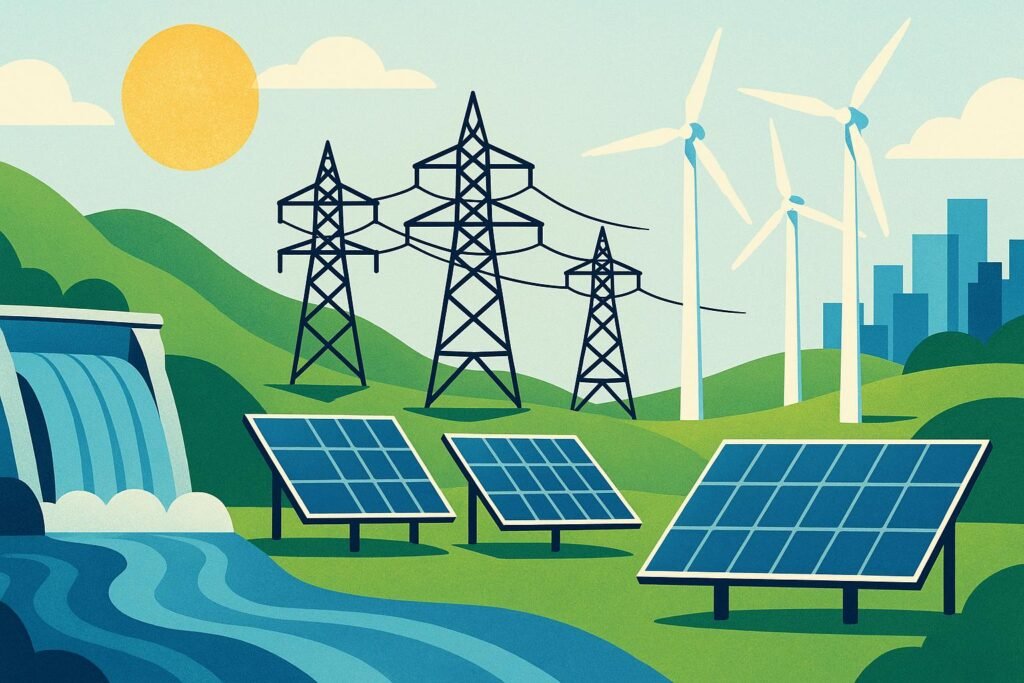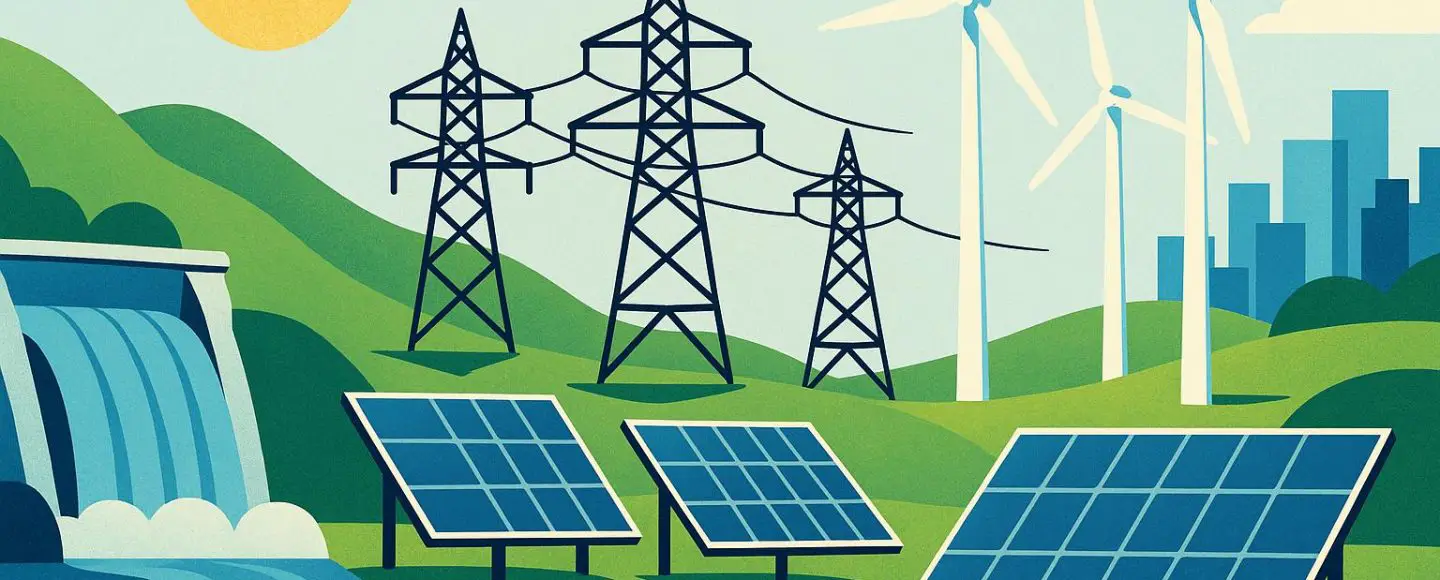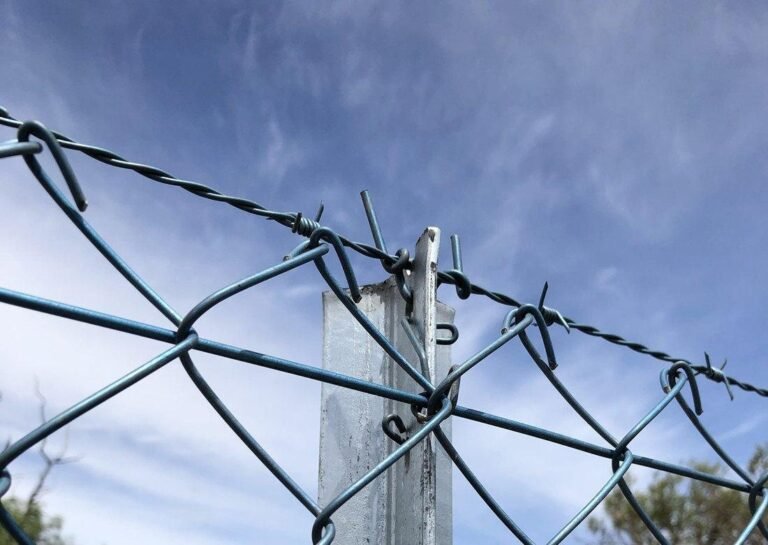

Revamping America’s Grid with Clean Energy
Revamping America’s Grid with Clean Energy is not just about future-proofing the nation’s electricity infrastructure. It is a necessary transformation unfolding across state lines, power corridors, and federal agencies. As energy demand climbs and clean energy adoption increases, the U.S. power grid faces the monumental task of modernization. Through federal investment, innovative grid upgrades, and state-driven transmission expansions, America is realigning its energy architecture to support a renewable-powered future. This article explores where the U.S. grid stands today, where it is headed, and how clean energy is driving its evolution.
Key Takeaways
- The modernization of the U.S. power grid is essential for successful renewable energy integration and improved energy reliability.
- Federal and state-level funding initiatives are accelerating infrastructure upgrades and transmission expansion projects.
- Major challenges include permitting bottlenecks, interconnection delays, and public resistance to new power lines.
- Projects in Texas and California offer models for future grid development.
Understanding the Need to Modernize the U.S. Power Grid
The American electric grid was primarily built in the mid-20th century. It was designed for centralized fossil fuel plants and one-way electricity flow. Today, that structure no longer meets the demands of a renewable-based energy economy. The growth of solar and wind energy requires a flexible system that can manage intermittent power input and two-way flow.
Modernization involves more than replacing aging infrastructure. It requires improved transmission capacity, smart grid technology, and streamlined permitting and regulatory processes. The Department of Energy (DOE) reports that as of 2024, over 2,000 gigawatts of clean energy projects are stuck in interconnection queues. This backlog is mainly due to transmission limitations and slow project approvals.
Federal Investments Fuel the Clean Energy Transition
A major milestone came in October 2023, when the Biden administration announced a $13 billion initiative to modernize the grid. This funding, part of the Infrastructure Investment and Jobs Act, supports transmission expansion, clean energy integration, and grid resilience to climate impacts.
Key components of federal efforts include:
- $2.3 billion for Transmission Facilitation Programs that help with regional and interregional line development.
- Support for microgrids in rural and tribal areas to increase energy independence.
- Investment in high-voltage direct current (HVDC) systems for efficient long-distance power transfer.
The Federal Energy Regulatory Commission (FERC) is also proposing reforms to improve coordination and reduce project approval timelines. These steps aim to standardize how energy projects connect to the grid.
State-Led Innovations and Transmission Expansion
While federal initiatives offer backing, the clean energy transition often relies on execution at the state and local levels. States like California and Texas are leading the way by investing in major transmission expansions.
California Energy Grid: CAISO Modernization Roadmap
California, through the California Independent System Operator (CAISO), is advancing more than 45 transmission upgrades. These projects aim to support up to 30 GW of renewable energy integration by 2035. Projects like Ten West Link and Gateway West are being built to efficiently transport solar energy from remote regions to dense metros such as Los Angeles and San Diego.
Texas: CREZ and ERCOT Expansion
Texas created the Competitive Renewable Energy Zones (CREZ) program over a decade ago. It connected wind-rich areas in West Texas to high-demand cities via 3,500 miles of high-voltage lines. Today, the Electric Reliability Council of Texas (ERCOT) is expanding further by supporting more solar installations and battery storage. These efforts help meet the state’s increasing energy needs.
Technical Hurdles in Grid Modernization
Grid modernization faces structural and technical challenges that must be addressed to ensure a flexible and resilient energy network.
- Interconnection Backlogs: Many clean energy developers wait years to connect their projects. In 2023, the average waiting period was 3.7 years, largely due to complex grid studies.
- Permitting Delays: Transmission lines often cross multiple states and local jurisdictions. Public objections and environmental reviews can significantly delay progress.
- Limited Regional Coordination: A lack of connections between regions hampers the movement of renewable power. For example, wind energy from the Midwest cannot efficiently reach East Coast markets without improved interregional infrastructure.
- Cybersecurity Risks: As the grid becomes more digital, vulnerabilities increase. Cybersecurity measures and system backups are critical to preventing outages and breaches.
These challenges slow momentum, despite strong public and political support for clean energy solutions.
How Energy Technologists Are Shaping the Modern Grid
Experts agree that modernization requires both physical and digital improvements. Technologies such as Dynamic Line Rating (DLR), Flexible AC Transmission Systems (FACTS), and grid battery systems offer better efficiency and adaptability. These technologies are at the core of a more intelligent energy infrastructure.
“Modernizing the U.S. grid isn’t just about building more power lines. It’s about creating smarter, faster systems that optimize how electricity flows,” says Dr. Leila Morgan, a senior grid integration researcher at the National Renewable Energy Laboratory (NREL).
Utilities are also using artificial intelligence to forecast energy demand, enhance reliability, and conduct predictive maintenance. These advancements are reshaping power management in states like Massachusetts and New York. Real-time data and smart sensors enable accurate monitoring and modeling of distributed energy resources (DERs), making the grid more responsive to supply and demand changes.
To understand this intersection in more depth, see how AI is being integrated into power grids to improve functionality and grid intelligence.
Why Transmission Expansion Matters
Transmission infrastructure is often overshadowed by wind turbines and solar panels in energy discussions. Yet it plays a fundamental role in enabling clean energy to reach markets efficiently. High-capacity lines are necessary for large-scale renewable distribution across states and regions.
Transporting wind energy from Wyoming to California or solar power from Arizona to Chicago requires long-distance transmission lines planned years in advance. Without them, clean energy is stranded far from demand centers and cannot be used effectively.
Expanded transmission also boosts grid resilience. During the 2021 Texas winter storm, poor connectivity to other regional grids limited Texas’s ability to import electricity. This lack of access contributed to rolling blackouts affecting millions of residents.
Real-World Successes Demonstrate Feasibility
There are examples across the country that show real progress in grid modernization:
- SunZia Transmission Project: A 550-mile HVDC line is being built from New Mexico to Arizona. It will deliver up to 3 GW of wind energy to the West Coast by 2026.
- Midcontinent ISO (MISO): In 2022, this operator approved a $10.3 billion plan to connect 53 GW of solar and wind energy across the Midwest.
- New England Clean Energy Connect: This project is designed to transport Canadian hydropower into Massachusetts. It will diversify the state’s energy mix and reduce reliance on fossil fuels.
These projects show that with coordinated infrastructure planning and strong funding support, large-scale clean energy transmission is both technically and financially achievable.
Conclusion: An Optimistic Path Forward
Modernizing the U.S. power grid represents a central piece of the clean energy transition. Federal funding, state leadership, and advanced technologies are aligning to meet the moment. While technical and policy challenges persist, ongoing progress points to a cleaner and more resilient energy future.
With deliberate coordination and the adoption of smarter technologies, the nation can create an electricity grid that provides affordable, reliable, and emissions-free energy. As part of this transformation, initiatives like AI-driven tools for sustainable energy will continue to play an important role.




